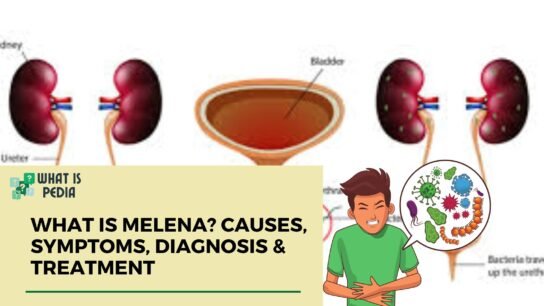Introduction
Alzheimer’s disease, a chronic neurodegenerative condition, profoundly impacts millions globally, making it one of the most common forms of dementia. Characterized by a progressive decline in cognitive functions, it disrupts daily living through memory loss and cognitive impairments. This blog aims to illuminate the path of Alzheimer’s from its silent onset to its profound impacts on patients and their families. Understanding Alzheimer’s is crucial—not only for those affected but also for society, as awareness can drive support, research, and compassionate care for all touched by this pervasive ailment.
1. Overview
What is Alzheimer’s Disease?
Alzheimer’s disease is a progressive neurological disorder that primarily affects the elderly, leading to memory loss, cognitive decline, and changes in behavior and personality. It is the most common form of dementia, accounting for 60-70% of cases. The disease progresses in stages, starting with mild symptoms that gradually worsen over time. At its core, Alzheimer’s involves the buildup of abnormal protein deposits in the brain, known as amyloid plaques and tau tangles, which disrupt the normal functioning of brain cells. This disruption leads to the characteristic symptoms of Alzheimer’s, which can significantly impact a person’s ability to perform daily activities independently.
Differences Between Alzheimer’s and Dementia
To clarify common misconceptions, the table below distinguishes between Alzheimer’s disease and dementia, helping to understand their relationship and differences:
| Aspect | Alzheimer’s Disease | Dementia |
| Definition | A specific disease that affects the brain, leading to progressive memory loss, cognitive decline, and personality changes. | A broad term used to describe a range of symptoms affecting memory, cognitive abilities, and daily functioning. |
| Causes | Caused by the buildup of amyloid plaques and tau tangles in the brain. | Can be caused by several different diseases, including Alzheimer’s, Parkinson’s, and vascular issues. |
| Symptoms | Disruptions in daily life due to memory loss, struggles with planning or problem-solving, difficulty handling routine tasks, disorientation with time or location, and shifts in mood and personality. | Symptoms vary widely but generally include memory loss and difficulties with thinking, problem-solving, or language that are severe enough to reduce a person’s ability to perform everyday activities. |
| Progression | Typically has a gradual onset and progresses in clearly defined stages: mild, moderate, and severe. | Progression can vary significantly depending on the underlying cause and may not always follow a predictable pattern. |
| Diagnosis | Diagnosed through a combination of medical history, genetic testing, neurological exams, and brain imaging. | Diagnosed based on clinical assessment of symptoms, with tests conducted to determine the underlying cause. |
| Treatment | While there is no cure, treatments focus on managing symptoms and may include medications like cholinesterase inhibitors and memantine. | Treatment varies depending on the cause but often includes medications to manage symptoms, therapies to enhance cognition, and strategies to support daily functioning. |
Understanding these differences is crucial for accurate diagnosis and management of the conditions, ensuring that individuals receive appropriate care and support tailored to their specific needs.
Demographics Affected
Alzheimer’s disease predominantly impacts the elderly population, but it is not exclusive to any specific demographic. Here are some statistics that outline who is most affected by Alzheimer’s:
- Age: The risk of developing Alzheimer’s increases significantly with age. Most individuals with Alzheimer’s are 65 and older. In the United States, approximately 10% of people aged 65 and older have Alzheimer’s dementia. This percentage rises to about one-third of people aged 85 and older.
- Gender: Women have a higher risk of developing Alzheimer’s disease compared to men. In the United States, nearly two-thirds of those affected by Alzheimer’s are women. Researchers believe this higher prevalence is partly because women generally live longer than men, increasing their exposure to potential age-related diseases.
- Genetics: Individuals with a family history of Alzheimer’s disease are at a higher risk. Those who have a parent, brother, sister, or child with Alzheimer’s are more likely to develop the disease themselves, especially if more than one close relative has the illness.
- Ethnicity: Alzheimer’s and other dementias are more prevalent in African Americans than in white Americans. African Americans face nearly double the risk of developing Alzheimer’s or other dementias compared to older white individuals. Similarly, Hispanics are approximately 1.5 times more likely to be affected by these conditions than their white counterparts.
These statistics highlight the importance of targeted awareness and prevention strategies that address the needs of the most vulnerable groups. Efforts to understand and combat Alzheimer’s must consider these demographic nuances to effectively address the disease across different communities.
Prevalence of Alzheimer’s Disease
Alzheimer’s disease is a major global health concern, affecting millions of individuals and their families. Here’s a brief overview of its prevalence both globally and in specific regions:
- Global Statistics: Alzheimer’s disease affects approximately 50 million people worldwide. This number is expected to increase to over 152 million by 2050 due to aging populations.
- United States: In the United States, an estimated 6 million people are living with Alzheimer’s. This number is expected to increase to approximately 13 million by 2050.
- Europe: In Europe, around 10 million people are currently diagnosed with dementia, with Alzheimer’s disease constituting a significant percentage of these cases.
- Asia: Asia has the highest number of people living with dementia, with numbers expected to increase dramatically due to rapidly aging populations, particularly in countries like China and India.
- Latin America: The prevalence of Alzheimer’s in Latin America is growing, with estimates suggesting significant increases in dementia cases over the next few decades.
These statistics illustrate the widespread impact of Alzheimer’s disease and underscore the urgent need for global efforts in research, treatment, and care strategies to manage this growing crisis.
Stages of Alzheimer’s Disease
Alzheimer’s disease progresses through several stages, each marked by more severe symptoms. Here’s a brief overview of the stages, including preclinical and mild cognitive impairment:
- Preclinical Alzheimer’s Disease: This stage involves changes in the brain, such as amyloid buildup and other biomarkers, which may be detected through imaging and other tests. However, there are no noticeable symptoms affecting daily activities at this stage.
- Mild Cognitive Impairment (MCI) Due to Alzheimer’s Disease: MCI is characterized by noticeable changes in cognition that are greater than expected for an individual’s age but do not yet significantly impair daily function. Symptoms might include memory lapses, such as forgetting words or the location of everyday objects.
- Mild Alzheimer’s Disease (Early-stage): In the mild stage, individuals may be able to function independently but are likely to experience memory lapses and have difficulties with problem-solving, complex tasks, and organizing or expressing thoughts.
- Moderate Alzheimer’s Disease (Middle-stage): This stage is typically the longest and can last for many years. As the disease progresses, the person may require a greater level of care. Symptoms can include increased confusion or trouble understanding spatial relationships, sleeping problems, significant changes in mood and behavior, and increased forgetfulness about personal history and current events.
- Severe Alzheimer’s Disease (Late-stage): In the final stage, individuals lose the ability to respond to their environment, carry on a conversation, and eventually control movement. They may need full-time assistance with daily personal care. This stage includes severe impairments in communication, awareness, and physical abilities.
Understanding these stages helps in planning for care and interventions that can improve the quality of life for those affected.
2.Signs and Symptoms
General Signs of Alzheimer’s Disease
Alzheimer’s disease often begins with subtle changes that may initially be mistaken for normal aging or stress. Early signs include minor memory lapses, such as forgetting recent conversations or events and difficulty in performing familiar tasks that require cognitive skills. As the disease progresses, these symptoms become more pronounced and begin to interfere with daily activities and independence.
Early Warning Signs and How They Progress
The progression of Alzheimer’s can vary, but common early warning signs include:
- Difficulty remembering newly learned information which leads to repeating questions.
- Challenges in planning or solving problems, such as trouble following a familiar recipe or managing monthly bills.
- Misplacing things and losing the ability to retrace steps, which is different from the occasional forgetfulness of everyday objects like keys or glasses.
As Alzheimer’s advances, cognitive and functional impairments deepen, affecting behavior, language, and physical abilities.
Symptoms by Stages
Mild Stage Symptoms
- In the mild stage, individuals may still function independently but might experience:
- Memory lapses, especially in recalling recent events.
- Challenges in problem-solving and planning.
- Difficulty performing tasks in social or work settings.
Moderate Stage Symptoms
- This stage is typically the longest and may last for many years. As the disease progresses, the person with Alzheimer’s will require a greater level of care. Symptoms include:
- Increased memory loss and confusion.
- Problems recognizing family and friends.
- Significant changes in sleep patterns.
- Noticeable difficulty in expressing thoughts and performing routine tasks.
Severe Stage Symptoms
- In the severe stage of Alzheimer’s, individuals lose the ability to respond to their environment, carry on a conversation, and eventually control movement. Symptoms may include:
- Need for full-time, around-the-clock assistance with daily personal care.
- Loss of awareness of recent experiences and surroundings.
- Difficulty walking, sitting, and eventually swallowing.
Understanding these signs and their progression helps caregivers and medical professionals provide the right support at each stage of the disease.
3.Causes
Understanding the Causes
Alzheimer’s disease arises from a complex interplay between genetic, environmental, and lifestyle factors, contributing to its development and progression. While the exact cause of Alzheimer’s remains elusive, researchers have identified several key elements that increase the risk.
Exploration of Genetic and Environmental Factors
Genetics plays a significant role, with certain genes increasing the likelihood of developing Alzheimer’s. For instance, the presence of the apolipoprotein E-e4 (APOE-e4) allele is known to significantly increase the risk. However, having the gene does not guarantee Alzheimer’s; it merely raises the probability.
Environmental factors also contribute to Alzheimer’s risk. These can include exposure to certain toxins, sustained head injuries, and lifestyle aspects such as diet, exercise, and cognitive engagement. Studies suggest that a heart-healthy diet, regular physical activity, and active social engagement might help to delay the onset or reduce the risk of Alzheimer’s.
Hereditary Factors
Hereditary predispositions to Alzheimer’s are especially pronounced in familial Alzheimer’s disease, which constitutes a small percentage of cases. This form of Alzheimer’s is caused by mutations in specific genes, such as APP, PSEN1, and PSEN2, which almost certainly lead to the disease, often at a younger age than typical Alzheimer’s. Family history of Alzheimer’s, particularly when a parent or sibling has the disease, also elevates one’s risk, underscoring the importance of genetics in Alzheimer’s pathology.
Understanding these causes helps in assessing risk, planning preventive measures, and tailoring interventions to mitigate the impact of these risk factors on individuals potentially predisposed to the disease.
4.Diagnosis and Tests
Diagnostic Process
Diagnosing Alzheimer’s disease involves a comprehensive clinical evaluation that includes a thorough medical history, physical examination, and neurological assessments. Doctors use a combination of strategies to rule out other conditions and confirm the presence of Alzheimer’s.
- Medical History: The process begins with the doctor gathering information about the patient’s medical history, including any symptoms, past health issues, family history of Alzheimer’s or other dementias, and current medications.
- Cognitive Tests: Cognitive testing is a crucial part of the evaluation. These tests assess memory, language skills, problem-solving abilities, and other cognitive functions. Tools like the Mini-Mental State Examination (MMSE) or the Montreal Cognitive Assessment (MoCA) are commonly used.
- Neurological Exams: These exams help check the brain’s functioning by assessing reflexes, muscle tone, sensory function, gait, and other aspects of the nervous system.
- Brain Imaging: Imaging tests such as Magnetic Resonance Imaging (MRI) and Computed Tomography (CT) scans are used to rule out other causes of cognitive impairment like strokes or tumors and to observe the brain’s structure for signs typical of Alzheimer’s, such as brain shrinkage.
- Biomarker Tests: Recent advancements include tests for specific biomarkers in cerebrospinal fluid and PET scans that can detect amyloid plaques in the brain, which are indicative of Alzheimer’s.
The combination of these tests helps ensure a comprehensive evaluation, aiding in a more accurate diagnosis of Alzheimer’s disease, differentiating it from other types of dementia and conditions with similar symptoms.
5.Management and Treatment
Current Treatments
The treatment of Alzheimer’s disease primarily focuses on managing symptoms and slowing the progression of the disease, as there is currently no cure. Available treatments include:
- Medications:
- Cholinesterase inhibitors (such as Donepezil, Rivastigmine, and Galantamine) are prescribed to treat mild to moderate Alzheimer’s. These drugs work by boosting levels of a chemical messenger involved in memory and judgment.
- Memantine is used to treat moderate to severe Alzheimer’s disease and works by regulating another chemical messenger that influences learning and memory.
The objective of these medications is to improve quality of life by alleviating symptoms and enhancing cognitive function, albeit temporarily.
- Supportive Therapies
In addition to medical treatments, supportive therapies play a crucial role in managing Alzheimer’s disease:
- Cognitive Stimulation: Activities tailored to stimulate the brain, such as puzzles, memory games, and reading, can help slow cognitive decline in some cases.
- Behavioral Management: Techniques to address changes in behavior and mood, reducing anxiety and improving coping mechanisms.
- Physical Activity: Regular exercise can help maintain muscle strength, improve mood, and increase cardiovascular health.
- Social Engagement: Encouraging social interaction helps prevent isolation and supports emotional health.
- Nutritional Support: A balanced diet rich in fruits, vegetables, and omega-3 fatty acids can support brain health and overall well-being.
These non-medical interventions are aimed at maintaining independence for as long as possible and improving the quality of life for those living with Alzheimer’s. Caregiver support and education are also integral to effective management, providing tools and strategies for daily care and decision-making.
6.Prevention
Reducing Risk Factors
While there is no guaranteed way to prevent Alzheimer’s disease, managing risk factors may help reduce the likelihood of developing it. Key preventive measures include:
- Healthy Diet: Eating a diet rich in fruits, vegetables, whole grains, and omega-3 fatty acids, such as the Mediterranean diet, may contribute to brain health.
- Regular Exercise: Engaging in regular physical activity, which can range from walking to aerobic exercises, helps maintain blood flow and may encourage new brain cells.
- Cognitive Training: Activities that challenge the brain, like puzzles, reading, and playing musical instruments, can help strengthen cognitive reserve.
- Social Interaction: Maintaining social connections and engaging in community activities can reduce stress levels and help ward off depression, both of which are linked to dementia.
- Sleep and Stress Management: Getting adequate sleep and managing stress through techniques like mindfulness or yoga can positively impact overall brain health.
- Regular Health Check-ups: Managing heart health, diabetes, and hypertension through regular medical check-ups can mitigate risk factors associated with Alzheimer’s disease.
These lifestyle choices can contribute to overall well-being and may decrease the risk of Alzheimer’s, promoting a healthier, more resilient brain as you age.
7.Outlook / Prognosis
What to Expect
The progression of Alzheimer’s disease can vary significantly among individuals, influenced by factors such as the person’s age at diagnosis, overall health, and the presence of other medical conditions. Typically, Alzheimer’s follows a gradual progression from mild memory loss to severe impairment of cognitive and physical functions. As the disease advances, the care required becomes more intensive, often involving help with daily activities and constant supervision to ensure safety.
Life Expectancy
The life expectancy for someone diagnosed with Alzheimer’s disease also varies. On average, people with Alzheimer’s live 4 to 8 years after their symptoms become noticeable to others, but some can live as long as 20 years, depending on other health factors and the level of care they receive. The variability in survival rates highlights the importance of early diagnosis and comprehensive management strategies to improve quality of life for as long as possible.
8.Living With Alzheimer’s
Caring for Someone with Alzheimer’s
Caring for a loved one with Alzheimer’s requires patience, understanding, and a well-prepared approach to manage both emotional and practical challenges. Here are some practical tips for caregivers:
- Establish Routines: Keeping a consistent daily schedule can help reduce confusion for someone with Alzheimer’s.
- Simplify Tasks: Break down tasks into easier steps and give clear, one-step directions.
- Enhance Safety: Modify the living environment to reduce risks, such as installing safety locks, removing trip hazards, and using automatic shut-off devices for appliances.
- Communicate Effectively: Use simple words and sentences. Maintain eye contact and use a calm, soothing tone of voice.
- Encourage Independence: Allow the person to do as much as possible with the least amount of assistance to maintain their independence.
- Seek Support: Join a support group to connect with other caregivers, share experiences, and receive emotional support.
When to Consult a Healthcare Provider
It is crucial to maintain regular communication with healthcare professionals. Consult a healthcare provider:
- When you notice a significant change in symptoms or rapid decline.
- For guidance on treatment adjustments.
- To discuss the management of coexisting medical conditions.
- To get help with caregiving strategies and mental health support for the caregiver.
Questions for Your Doctor
During medical appointments, it’s important to ask questions that help you better understand the disease and its management. Consider asking your doctor:
- What stage of Alzheimer’s is my loved one currently experiencing?
- What changes in symptoms should we expect in the next stage?
- Are there any new treatments or clinical trials available?
- How can we manage behavioral changes and sleep issues?
- What local resources and support systems are available for us?
Asking these questions can provide crucial information and help you plan for future needs while ensuring the best possible care for your loved one.
Conclusion
Understanding and managing Alzheimer’s disease requires a robust blend of education and supportive care. By deepening our knowledge about the disease, its progression, and the effective management strategies available, caregivers and families can provide better support to those affected. It’s crucial to recognize the value of seeking help and the strength in community support.
For those navigating the challenging waters of Alzheimer’s, joining support groups and connecting with resources can provide much-needed support and information. Engaging with platforms like Whatispedia, which offer extensive insights and resources, can empower both caregivers and patients by providing accessible, comprehensive information. Remember, you are not alone in this journey—there are numerous avenues for support and guidance.
For further information and resources, consider exploring Whatispedia, where a community of knowledge awaits to assist you in better understanding and coping with Alzheimer’s disease.







